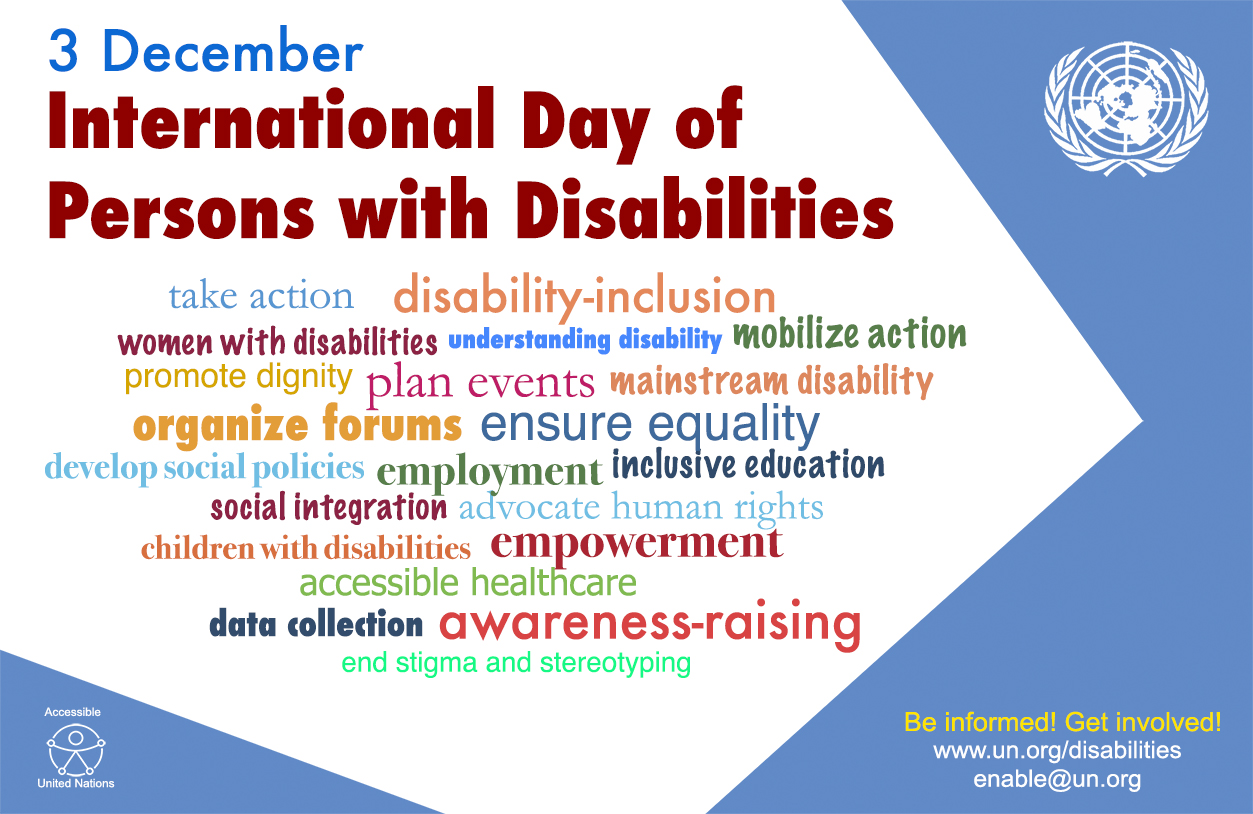December 3 is the United Nations International Day of Persons with Disabilities. This is a day to reflect on what Australia and communities around the world can do to raise awareness of and promote an understanding of people with disabilities.
This year's theme is 'Achieving 17 Goals for the Future We Want', which draws attention to the 17 Sustainable Development Goals (SDGs) and how they can create more inclusive and equitable communities for people with disabilities.
People with disabilities make up the largest and most disadvantaged minority in the world. In developing countries, they are over-represented among the persistently poor. According to the World Health Organisation, 1 in 7, or 1 billion people globally have a disability. Eighty per cent of these people live in developing countries. For many, stigma, exclusion and discrimination present real barriers to being able to fully participate in their communities, affecting them economically.
The stability of Australia's region depends on sustainable economic growth and poverty reduction. But this can only be achieved when all people, including those with disabilities, have opportunities to benefit from and contribute to development.
More equal and inclusive societies are ones where people with disabilities can access quality education, employment opportunities, and can contribute to their community. Such societies are stronger, more prosperous and more stable.
Australia has a strong track record in disability-inclusive development. See our Development for All Strategy that outlines our vision for supporting improved quality of life for people with disabilities through our aid investments and diplomatic efforts.
Since Australia ratified the United Nations Convention on the Rights of Persons with Disabilities in 2008 we have worked to make inclusion part of how we do business. We are committed to ensuring we leave no one behind.
More information about Australia's assistance for disability-inclusive development and disability-inclusive development initiatives.
Key facts about Disability-Inclusive Development
- 15% of the world's population have a disability – over 1 billion people worldwide1
- 110-190 million people experience a very significant impact from disability2
- 80% of people with disabilities live in developing countries3
- 20% (1 in 5) of the world's poorest people in developing countries have disabilities4
- People with disabilities have poorer health, lower education achievements, less economic participation and higher rates of poverty than people without disabilities
- Disability is more common among women, older people and low income households
- The cost of exclusion is significant not only for people with disabilities and their families, but also for a country's economy
- In order to overcome those inequalities, countries must ensure that their national policies and programs address the needs of people with disabilities and promote the active participation of their representative organisations in their design, implementation and evaluation.
The Australian Government is committed to playing a leadership role internationally in disability-inclusive development to enable people with disabilities in developing countries to find pathways out of poverty and realise their full potential.
Australia's international advocacy, diplomatic efforts and aid program investments will continue to make a make a major contribution to improving the quality of life for people with disabilities with the objective that our development efforts leave no one behind.
- 1 WHO & World Bank. (2011). World Report on Disability, p. 28. Retrieved from http://www.who.int/disabilities/world_report/2011/en/index.html
- 2 WHO & World Bank. (2011). World Report on Disability, p. 29. Retrieved from http://www.who.int/disabilities/world_report/2011/en/index.html
- 3 WHO & World Bank. (2011). World Report on Disability, p. 28. Retrieved from http://www.who.int/disabilities/world_report/2011/en/index.html
- 4 WHO & World Bank. (2011). World Report on Disability, p. 27. Retrieved from http://www.who.int/disabilities/world_report/2011/en/index.html

